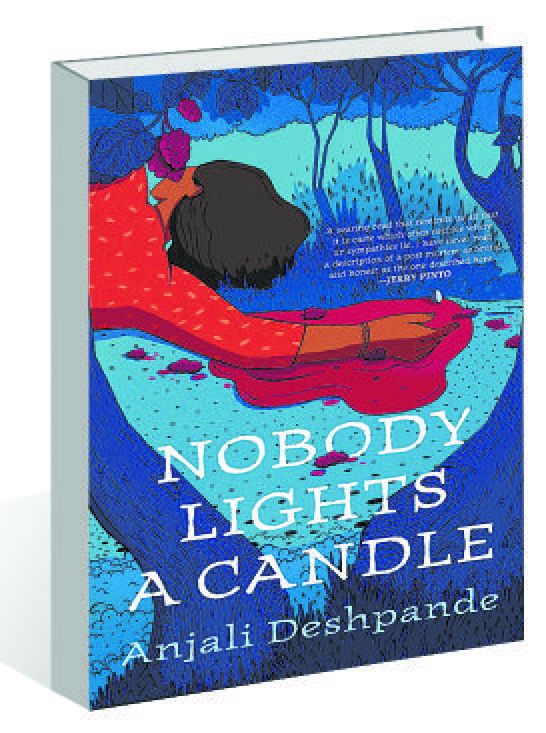Nobody Lights a Candle by Anjali Deshpande. Speaking Tiger. Pages 232. Rs 399
Book Title: Nobody Lights a Candle
Author: Anjali Deshpande
Maninder Sidhu
Anjali Deshpande’s translation of her Hindi novella, ‘Hatya’ (2019), evocatively titled ‘Nobody Lights a Candle’, is a pacy ‘touchable tale’ of deep-rooted structural prejudices in Indian society. It is a crime story that boldly delves into biases of caste, class and gender as they impinge upon the lives of the underprivileged. The linear, third-person, straight-forward narrative is, in particular, a “testimony to the loss of faith in life and people” amongst the thrice-‘othered’ poor Dalit women.
Adhirath, a suspended Station House Officer of a sleepy police station on the outskirts of Delhi, gets drawn in an unofficial capacity into the heart-wrenching murder of a young Dalit girl in a farmhouse. He laments the callous and sexist attitude of a deeply caste-ridden society: “The girl with the yellow dupatta? Pross? Randi? Beauty parlour girl? Amirpurwali? The dead body in the farmhouse? How many ways to describe her and not one clue to her personality.” He is disturbed that Suryabala’s mother, Ramvati, is the only moaner of the ‘murder most foul’, and proceeds to uncover the truth with an honesty and compassion habitually forsaken by his peers.
The stigma of caste is reinforced by Adhirath’s personal story as well, wherein patriarchy raises its loathsome head validating the formidability of the institutionalised malaise. His wife, Pushpa, a fellow cop from a ‘lower caste’, is spared no abuse by her foul-mouthed father-in-law, a firm believer of endogamic practices. Despite Adhirath’s best efforts, there are times when she is convinced that “home is designed as a highly sophisticated weapon to kill human beings”. The parallel stories of Suryabala and Pushpa unfold in contrasting labyrinths of alleged prostitution and domestication respectively; if physical violation is the fate of the girl who plays “parlour-parlour”, mental stress is the bane of the “havaldarni”.
Tactfully, the decibel of caste is lowered after the exposition, allowing the crime investigation to take over, and raised back towards the end to forcefully challenge crimes committed in the name of propriety and virtuosity. The language used is alive to the rhythms of local dialects and words like faram, toobwells, proparty, biskey, Kilopetra, cushtumbers, munnayger, and several others are used without explanation or apology; thus, firmly embedding the tale in local reality. Barring a few typos, the book reads well.
Since the novel realistically echoes the pain arising from upper-caste crime against women — as reported in the Hathras (2020), Lakhimpur Kheri (2022) and several other rape-murder cases — it leans towards the genre of ‘non-fiction’, better expressed through the portmanteau word ‘faction’: fact plus fiction. Also, like Nalini Jameela’s ‘The Autobiography of a Sex Worker’, and the award-winning film ‘Gangubai Kathiawadi’, the novel draws attention to the dignity due to professional compulsions and choices of a woman.
The narrative is consistent in its bitter tone and the brevity with which grave complexities and inequalities are worded cuts deep; for instance, Adhirath’s fleeting thought as he rides to the crime scene: “There are farmhouses on both sides of the road. Wonder where the fields of the villagers are?” The rich have it easy as their “misconduct is concealed behind the curtain of wealth… behind the customs and traditions they have so carefully nurtured”.
The succinct story not only exposes the uncouth underbelly of law, but also debunks the selective outrage for justice of an internally sliced society.














